Project to convert L-gas to H-gas
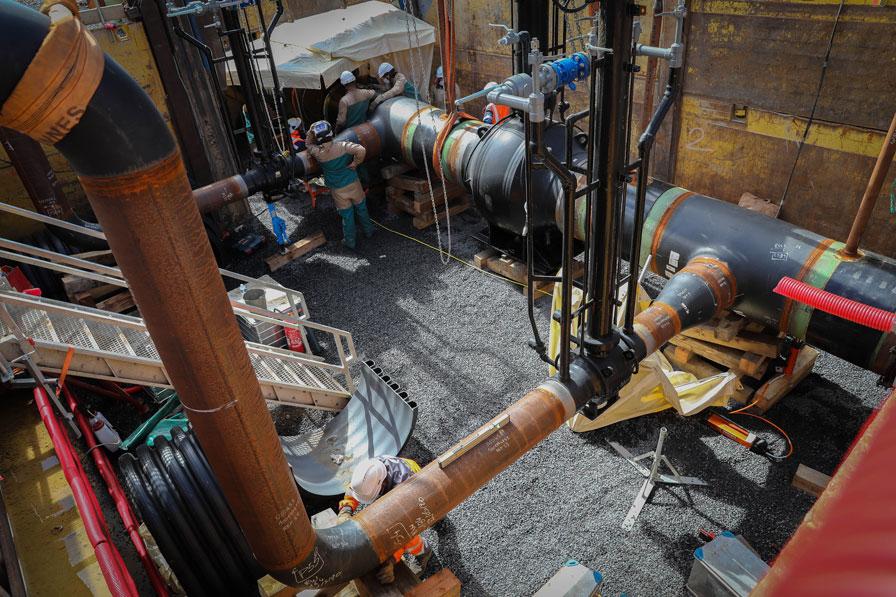
Converting the L-gas network to H-gas
The Hauts-de-France region is largely supplied with “L-gas” from The Netherlands, in particular the Groningue gas field, which is coming to the end of its operational lifespan. The associated transmission contracts will not be renewed, and French imports of L-gas will stop in 2029. By that time, the entire transmission and distribution network will have to be converted to transport H-gas, which has a higher calorific value. This is the goal of the conversion project, which plays a role in both the security of natural gas transmission in France and the liquidity of the European gas market.
L-gas (Low calorific value) makes up 10% of total French consumption - i.e. 1.3 million customers located in the departments of Nord, Pas-de-Calais, Aisne, Somme, Oise and, to a lesser extent, Seine-Maritime.
To guarantee the security of transmission after 2029, the L-gas network will have to be converted to the high calorific value gas (so-called “H-gas) that supplies the rest of France. As well as modifications to the transmission and distribution network, this large-scale project will require work to be carried out with each individual customer.
From low to high:
L-gas to H-gas
The composition of natural gas varies according to its origin and influences its energy content. The higher the nitrogen level, the lower the natural gas’ calorific value (the amount of heat generated by combustion).
There are two types:
- "L-gas" (Low calorific value) coming mainly from Groningue, which has high levels of nitrogen and supplies the North of France.
- "H-gas" (High calorific value) coming from the North Sea, Russia and Algeria, which supplies the rest of the country.
A gradual conversion plan between 2016-2029
Converting the L-gas in the current consumption zone to H-gas involves cutting the L-gas transmission and distribution networks in around twenty geographical areas. Changes to the type of gas transported will be carried out independently and successively for each area, leading to the gradual conversion of the whole zone by 2029 at the latest. The conversion will occur at a pace compatible with the work required for each of the 1.3 million affected customers.

Map of sectors to convert

Decree No. 2016-348 of 23 March 2016 provides for a Coordination Committee. Acting under the authority of the Ministers responsible for energy, industrial security and the economy, the committee brings together the following affected stakeholders:
- The Energy Regulatory Commission (CRE)),
- Gas supplier representatives,
- Gas network managers,
- The storage operator,
- Injection operators of mine gas and biomethane,
- Gas equipment manufacturers and professionals,
- The French Gas Association,
- The affected licensing authorities,
- Consumer associations and energy union federations, each of which appoints a representative.
The committee sets priorities and guidelines and oversees compliance with the conversion schedule.
- March 2016: decree No. 2016-348 of 23 March 2016 regarding the project to convert the network to L-gas
- September 2016: ministers receive the conversion plan established by the 5 operators in charge of the conversion (GRDF, Sicae de la Somme et du Cambraisis, Gazelec de Péronne, Storengy and GRTgaz)
- July 2017: order of 10 July 2017 setting out the list of municipalities affected by the pilot phase
- 2016 - 2020: licencing & Construction of GRTgaz facilities required for the construction of the pilot step
- 2019 - 2020: conversion of 4 pilots areas (Doullens in April 2019, Gravelines in September 20219, Grande Synthe in November 2019, Dunkerque in October 2020)
- April 2020: works begin on the Taisnières-sur-Hon site for phase 1 of deployment (11 sectors converted)
- October 2020: decree no. 2020-1313 of 29 October 2020, modifying the decree of 23 March 2016. While awaiting the decree, the list of municipalities to convert in 2021 and 2022 is set and a monitoring committee facilitated by the DGEC is established (firstmeeting held 4 February 2021)
- January 2021: ministers receive the conversion plan established by the 5 operators in charge of the conversion
- 2021: conversion of the Calais and Saint Omer sectors
- 2022: conversion of the Béthune Nord, Boulogne and Abbeville sectors
- 2023: construction of the Béthune-Lens pipeline (DN 300 over 12 km)
- 2024: end of phase 1 works
- 2024 à 2028: completion of GRTgaz works for phase 2 of the conversion plan's deployment
- 2029: end of the GRTgaz conversion programme
The conversion project will involve works to adapt the GRTgaz network. An initial series of modifications have been carried out to convert the network in Doullens, Gravelines, Grande-Synthe and Dunkirk between 2018 and 2020 as part of the pilot phase. A second series of modifications will be required for the rollout phase that is currently planned for 2021.
- Doullens (80): creation of a new site at Valhuon to connect the pipelines between Hauts de France I (H-gas network) and Artois (L-gas network), and to adapt the switching stations in Diéval.
- Gravelines (59): connection of the H-gas and L-gas networks at the existing Gravelines DP station.
- Grande-Synthe et Dunkirk (59): connection on the Hauts-de-France I (H-gas network) pipeline, extension of the existing Brouckerque station, and construction of a new circa 2 km pipeline (DN200 mm) between the Brouckerque and Spycker stations.
The pilot phase also planed to adapt the Arleux site to maintain mine gas injections both during this phase and for the start of the conversion plan’s rollout phase.
Works realised by GRTgaz for the pilot phase
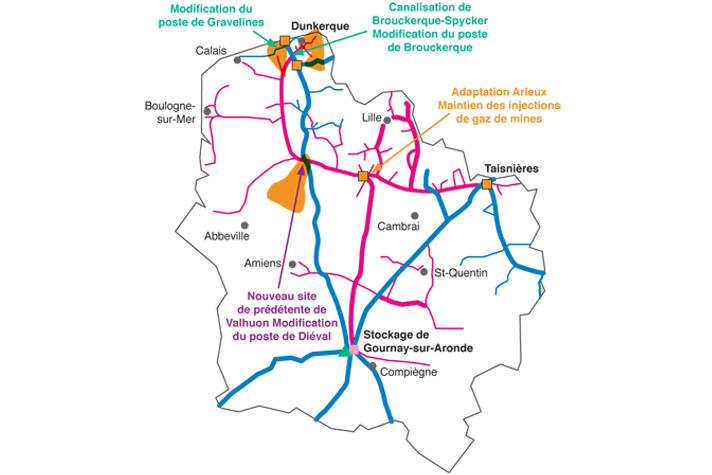
A second series of transmission network modifications will then be required for the conversion rollout from 2021 (phase 1).
Summary of the work planned for phase 1 of the deployment of the conversion plan

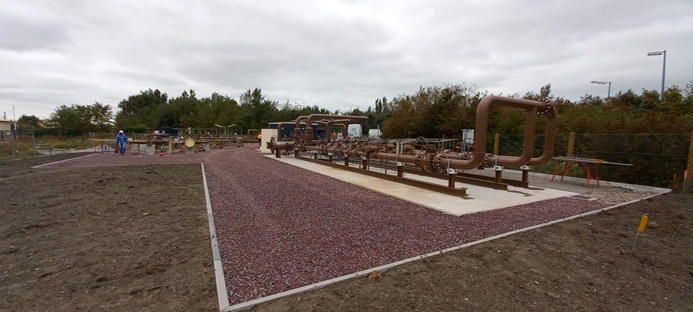
New facilities at Loon Plage (North) commissioned on October 2021
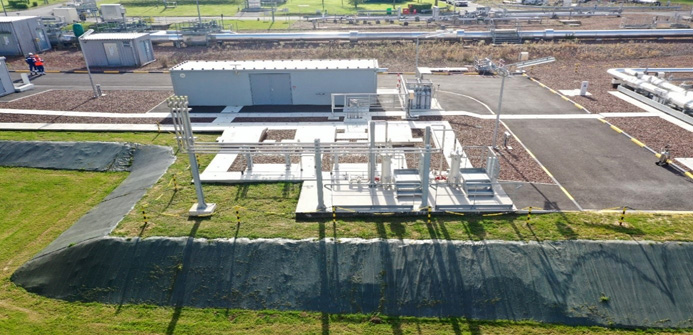
New facilities at Taisnières (Nord) commissioned on 2022
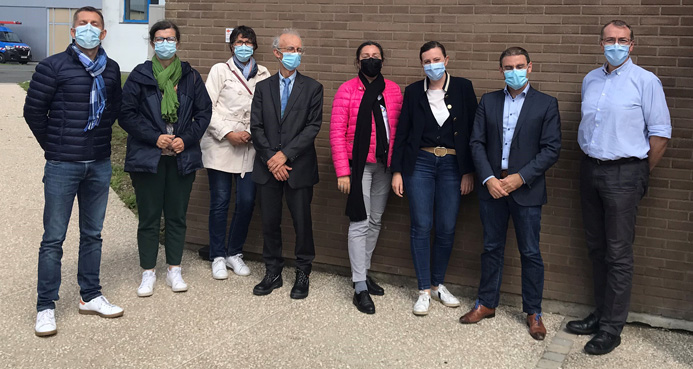
GRDF-GRTgaz coordination meeting on July 6, 2021 in Calais to prepare for the changeover
France is not the only country affected by the Groningue (The Netherlands) gas field’s fall in production. Concerted European efforts have been made within the “Task Force Monitoring L-Gas Market Conversion” regarding L-gas, and the various affected EU states meet on a regular basis (The Netherlands, Germany, Belgium, France, Luxembourg). A collaboration agreement has also been signed in Belgium and France between Gasunie Transport Services (GTS), Fluxys and GRTgaz for the conversion of L-gas to H-gas. Regular technical exchanges have also been held between Belgian, German and French operators.
The project to adapt the transmission networks from L gas to H gas in France and Belgium was part of the Projects of Common Interest of the European Union between 2018 and 2022.
Toolbox and useful links
Publications

